Albert Einstein - A Centennial Celebration of His Miraculous Year
Special Relativity
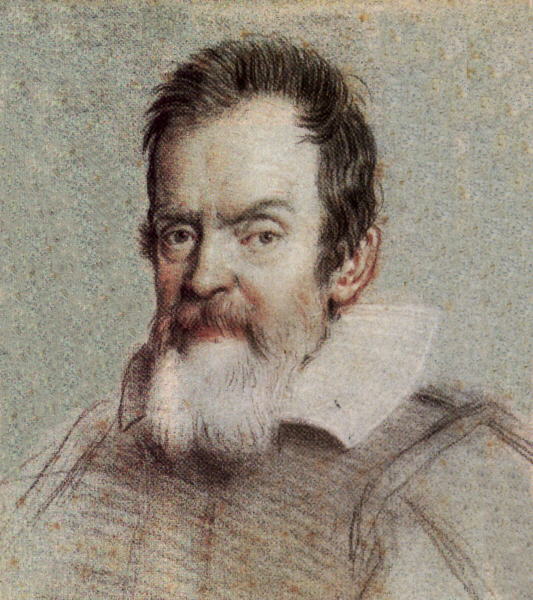
Galileo (1564-1642) from Pictures of Physicists.
Classical mechanics basically started with Galileo. We are intuitively familiar with some of the results.
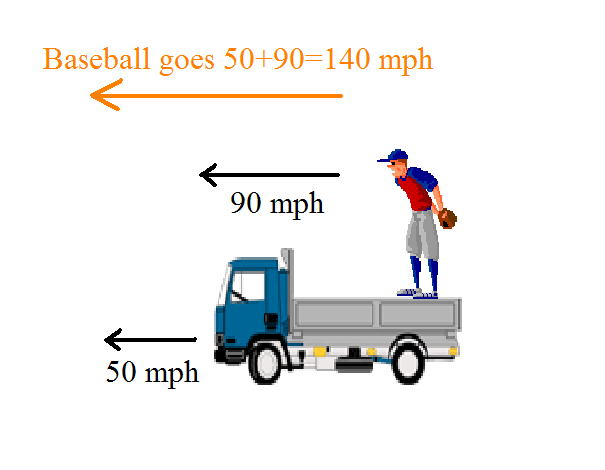 For example, if a baseball pitcher is riding in the back of a truck traveling 50 miles per hour and the pitcher throws a 90 mile per hour fast ball forward, then the ball travels 50+90=140 miles per hour. In fact, this idea of the addition of velocities is sometimes called the Galilean transformation.
For example, if a baseball pitcher is riding in the back of a truck traveling 50 miles per hour and the pitcher throws a 90 mile per hour fast ball forward, then the ball travels 50+90=140 miles per hour. In fact, this idea of the addition of velocities is sometimes called the Galilean transformation.
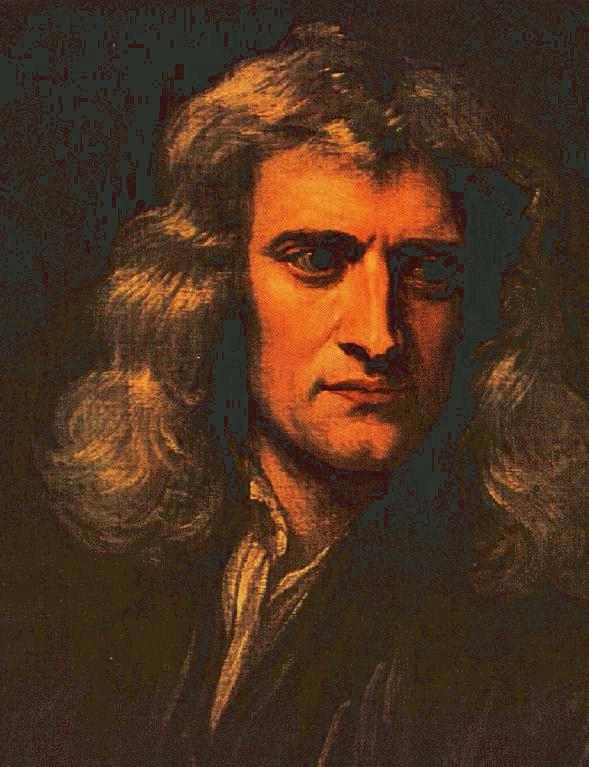
Isaac Newton
(1643-1727), from Pictures of Physicists.
Isaac Newton developed the area of mathematics called "calculus" to deal with dynamical mechanical systems. Newton's mechanics explained all known dynamics with a high degree of accuracy. In particular, his Universal Law of Gravitation allowed for the accurate prediction of the positions of the planets at most any point in time over a period of thousands of years. Newtonian mechanics are still used today in sending probes to distant planets. At the end of the 19th century, there seemed to be no dynamic problem which could not be addressed with classical Newtonian mechanics.
However, as discussed earlier,
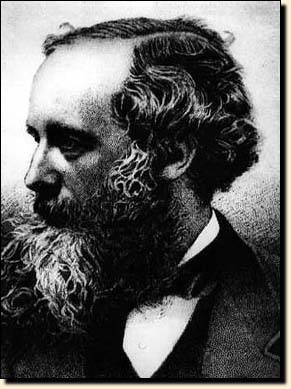
James Clerk Maxwell (1831-1879), from
AIP History Center.
Maxwell's theory of electromagnetism implied that light was a wave. If it is a wave, then it was thought to need a medium through which to travel. This hypothesized medium was called the "ether." The ether was thought to permeate the universe and could be used to provide an absolute frame of reference. All motion and velocities of classical mechanics could be measured with respect to the ether.
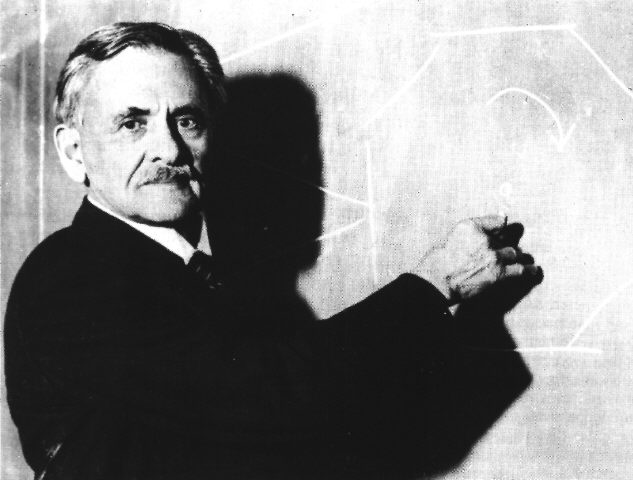
Albert Michelson
(1852-1931), from Pictures of Physicists.
Around 1885, Albert Michelson and Edward Morley attempted to measure the Earth's motion through the ether as it orbited the Sun. As the Earth orbits the Sun,
the ether wind should slow down light beams traveling against the either wind, and speed up light beams traveling along with the ether wind.
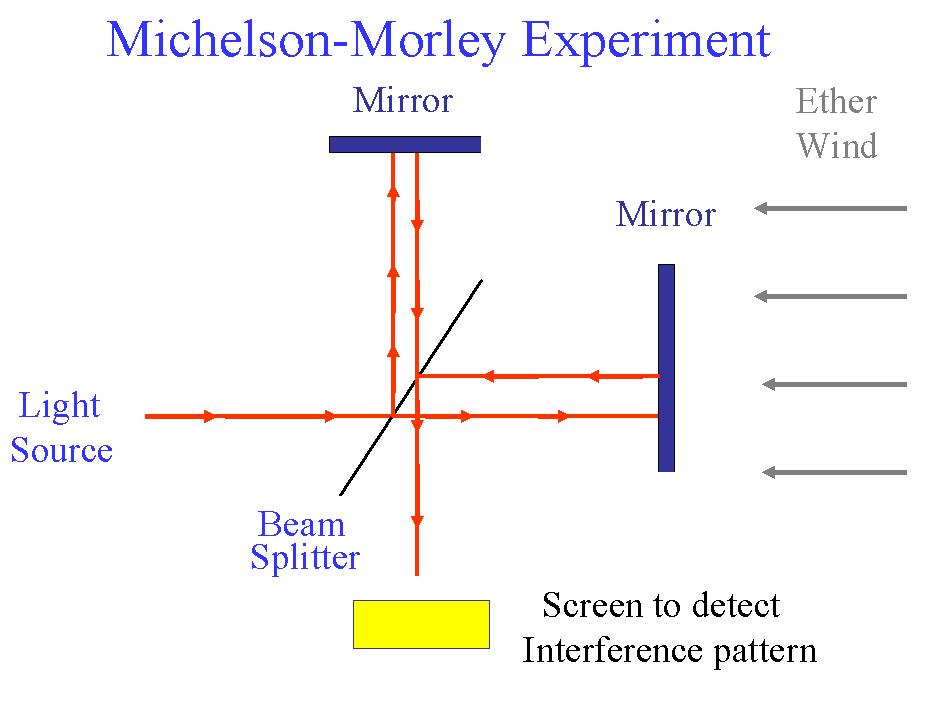 As seen here,
the viewer will see the two beams of light which have traveled along
different arms display some interference pattern. If the system is
rotated,
then the influence of the ether wind should change the time the
beams of light take to travel along the arms and therefore should change
the interference pattern. The experiment was performed at different times
of the day and of the year. NO CHANGE IN THE INTERFERENCE PATTERN WAS
OBSERVED!
As seen here,
the viewer will see the two beams of light which have traveled along
different arms display some interference pattern. If the system is
rotated,
then the influence of the ether wind should change the time the
beams of light take to travel along the arms and therefore should change
the interference pattern. The experiment was performed at different times
of the day and of the year. NO CHANGE IN THE INTERFERENCE PATTERN WAS
OBSERVED!
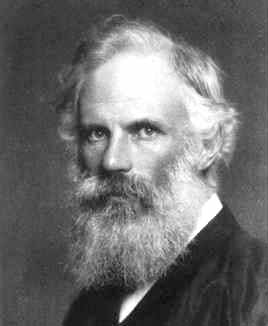
George Fitzgerald (1851-1901), from The MacTutor History of Mathematics archive.
In 1892, G.F. Fitzgerald proposed that an object moving through the ether wind
experiences a contraction in the direction of the ether
wind. That is, one of the arms is
reduced from it's original length to a new shorter length.
This is called the Lorentz-Fitzgerald contraction and has the potential to
explain the negative result of the Michelson-Morley experiment.
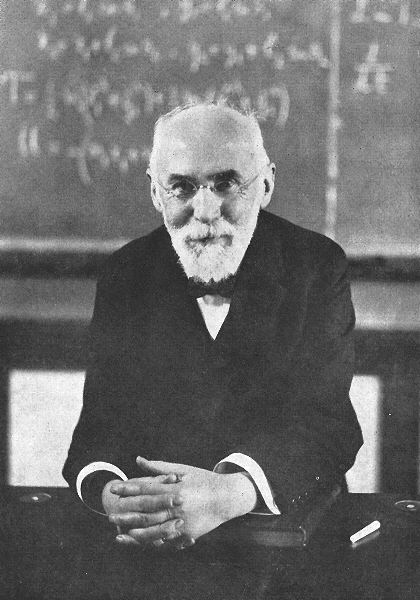
Hendrick Lorentz (1853-1928), from Pictures of Physicists.
However,
even under this assumption of contraction due to the ether wind, a
Michelson-Morley apparatus with unequal arms will exhibit a pattern shift
over a 6 month period as the Earth changes direction in its orbit around
the Sun. In 1932, Kennedy and Thorndike performed such an experiment and
detected no such shift.
The implication of these experiments is that the speed of light is constant
and the same in all directions for all observers.
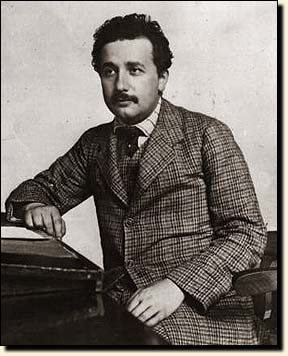
Einstein in 1905, from Pictures of Physicists.
Albert Einstein published "Zur Elektrodynamik bewegter
Korper" (On the Electrodynamics of Moving Bodies) in Annalen der
Physik (Annals of Physics) volume 17 in 1905. In this paper, he established
the SPECIAL THEORY OF RELATIVITY! Quoting from the introduction to this
paper:
"...the same laws of electrodynamics and optics will be valid for all
frames of reference for which the equations of mechanics hold good. We
raise this conjecture (the purport of which will hereafter be called the
"Principle of Relativity") to the status of a postulate, and also
introduce another postulate, which is only apparently irreconcilable with
the former, namely, that light is always propagated in empty space with a
definite velocity c which is independent of the state of motion of the
emitting body.
In short, we have the following two Postulates of Relativity.
- Postulate 1. All physical laws valid in one frame of reference are equally
valid in any other frame moving uniformly relative to the first.
- Postulate 2. The speed of light (in a vacuum) is the same in all inertial
frames of reference, regardless of the motion of the light source.
From these two simple (and empirically verified) assumptions arises the
beginning of the revolution that marks our transition from classical to
modern physics!
Two of the surprising implications of the Special Theory of Relativity is
that time and distance will be measured differently in different inertial
frames. Time is dilated and lengths are contracted.
What's the punch line here? Between two different inertial
frames, measurements of time and distance are relative!
 Suppose a spaceship travels at 50% the speed of light and fires out a projectile at 90% the speed of light. Naively we might expect to observe the projectile going 50%+90%=140% the speed of light. However, the measured velocity is only 97% the speed of light.
Suppose a spaceship travels at 50% the speed of light and fires out a projectile at 90% the speed of light. Naively we might expect to observe the projectile going 50%+90%=140% the speed of light. However, the measured velocity is only 97% the speed of light.
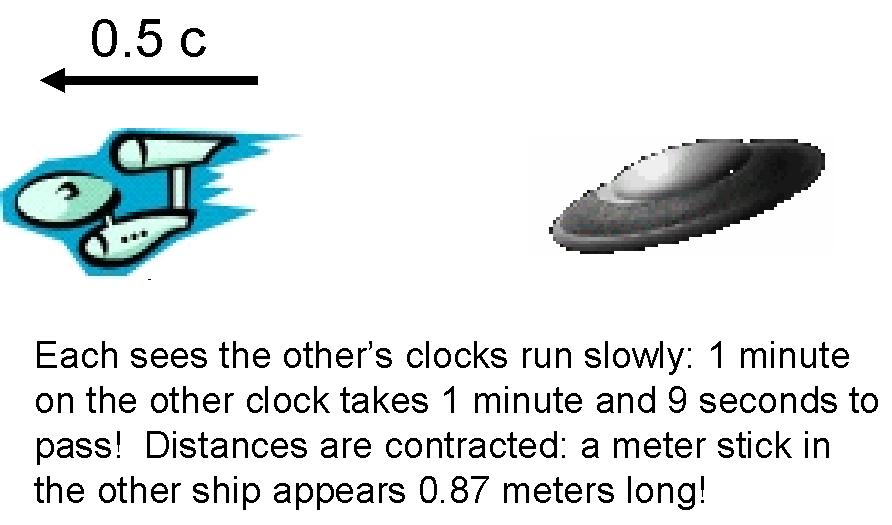 If we consider two ships moving apart, then we find that no matter how much we accelerate, they cannot move apart at the speed of light. This relative speed can be arbitrarily close to the speed of light, but cannot be the speed of light. Einstein showed that the speed of light is a universal speed limit!
Suppose two spaceships are moving apart uniformly at half the speed of light. It doesn't matter which ship we consider as moving and which stationary. In fact, it is meaningless to even try to make these classifications. Each ship will perceive itself as stationary and the other ship as moving away from it at half the speed of light (this follows from the Principle of Relativity). Now let's see how these ships measure lengths and time intervals in the other ships. Of course, each ship's occupants see everything normal inside their own ship. That is, clocks behave as expected and lengths appear normal. However, when looking at the other ship, things are not as classically expected. Clocks are seen to run more slowly and lengths appear shorter. When one ship observes the clock in the other ship, a minute on the other clock takes 1 minute and 9 seconds. A meter stick in the other ship is measured at 0.87 meters long.
If we consider two ships moving apart, then we find that no matter how much we accelerate, they cannot move apart at the speed of light. This relative speed can be arbitrarily close to the speed of light, but cannot be the speed of light. Einstein showed that the speed of light is a universal speed limit!
Suppose two spaceships are moving apart uniformly at half the speed of light. It doesn't matter which ship we consider as moving and which stationary. In fact, it is meaningless to even try to make these classifications. Each ship will perceive itself as stationary and the other ship as moving away from it at half the speed of light (this follows from the Principle of Relativity). Now let's see how these ships measure lengths and time intervals in the other ships. Of course, each ship's occupants see everything normal inside their own ship. That is, clocks behave as expected and lengths appear normal. However, when looking at the other ship, things are not as classically expected. Clocks are seen to run more slowly and lengths appear shorter. When one ship observes the clock in the other ship, a minute on the other clock takes 1 minute and 9 seconds. A meter stick in the other ship is measured at 0.87 meters long.
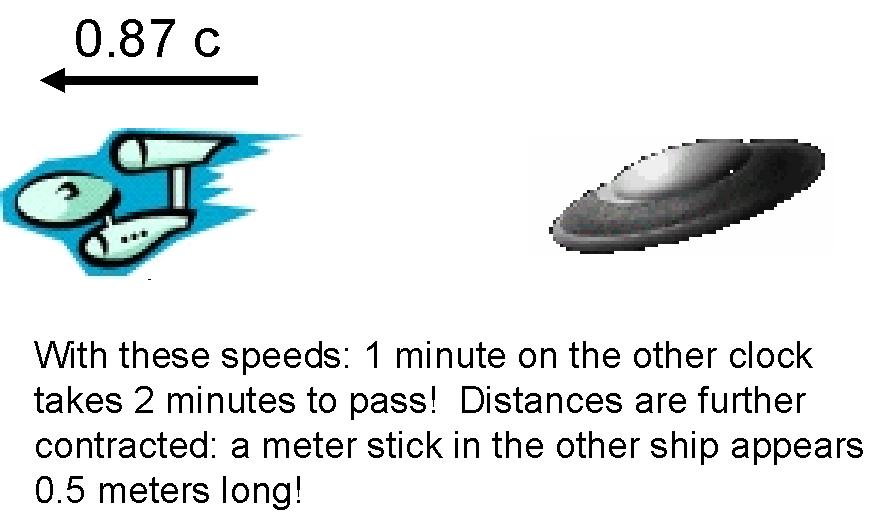 If the ships are moving apart at 87% the speed of light, then a minute on the clock in the other ship takes 2 minutes to pass. A meter stick is measured as half a meter long. As the speed between the ships increases, clocks are observed to run more slowly and meter sticks are measured shorter, as seen in the other ship. In fact, as the relative speed approaches the speed of light, lengths in the other ship are seen to go to 0 and time in the other ship is seen to slow to a stop. Again, each observer sees this happen in the other ship, but everything appears normal within their own ship.
If the ships are moving apart at 87% the speed of light, then a minute on the clock in the other ship takes 2 minutes to pass. A meter stick is measured as half a meter long. As the speed between the ships increases, clocks are observed to run more slowly and meter sticks are measured shorter, as seen in the other ship. In fact, as the relative speed approaches the speed of light, lengths in the other ship are seen to go to 0 and time in the other ship is seen to slow to a stop. Again, each observer sees this happen in the other ship, but everything appears normal within their own ship.
Go to Conclusion and References section.












